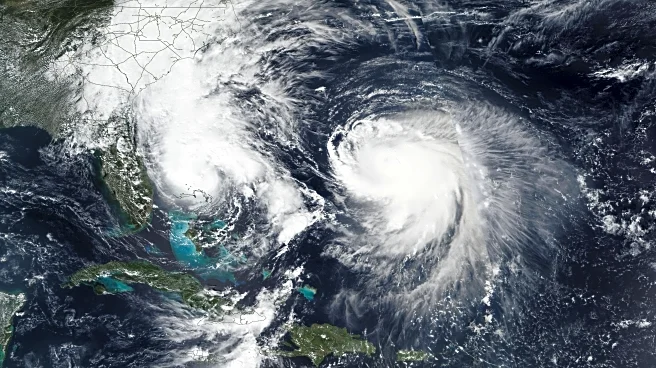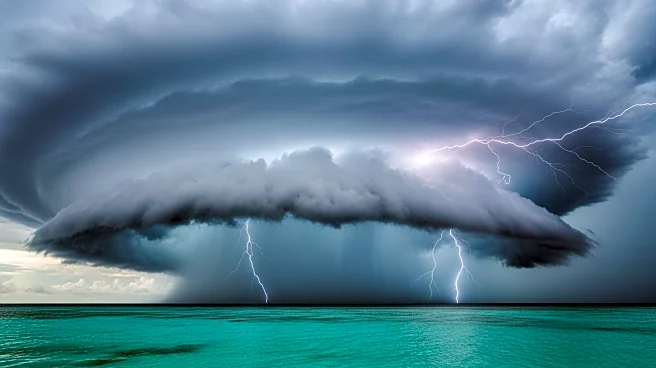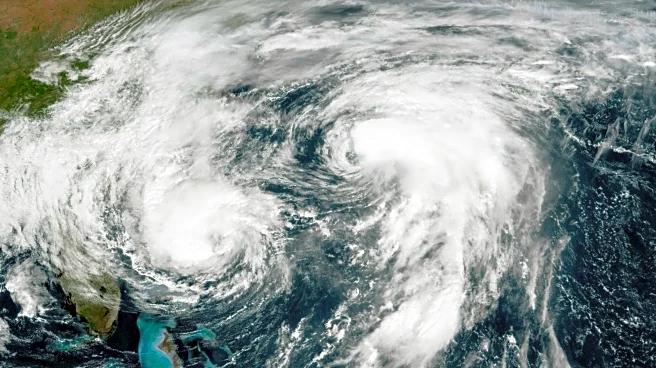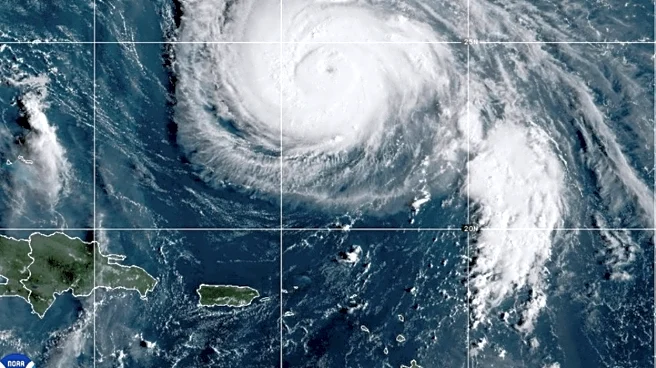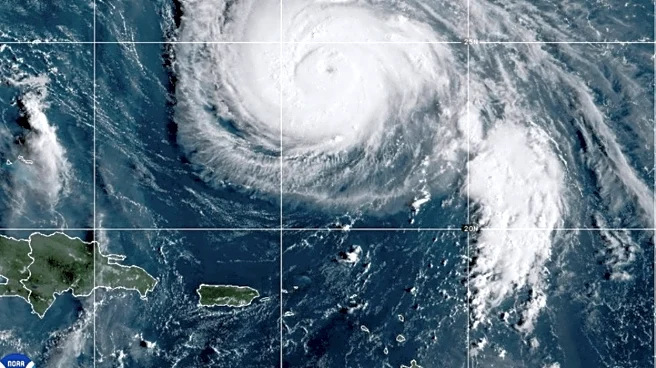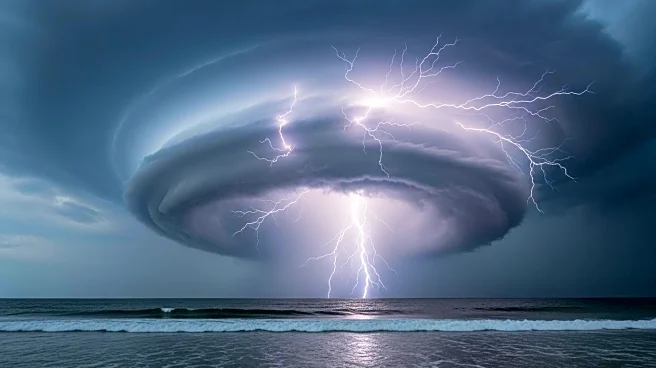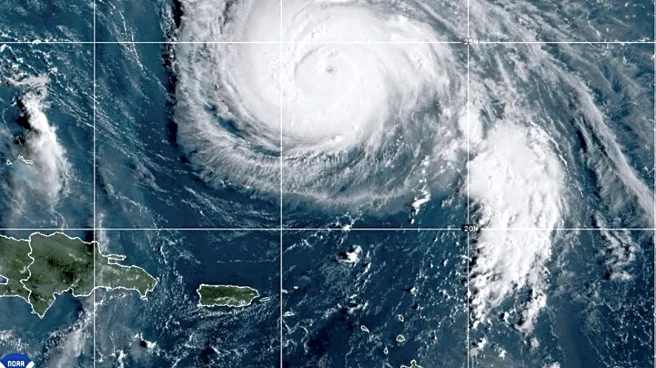What's Happening?
Tropical Storm Imelda has caused significant disruption in the northern Caribbean, particularly affecting Cuba where two fatalities have been reported. The storm, which brought heavy rainfall, was located about 165 miles north of Great Abaco Island in the Bahamas. It is expected to strengthen into a hurricane. In Cuba, the storm led to landslides and flooding, particularly in Santiago de Cuba province, resulting in the deaths of two individuals. The storm has also caused power outages and led to the evacuation of thousands in affected areas. The Bahamas, still recovering from past hurricanes, closed schools and issued evacuation orders in anticipation of the storm's impact.
Why It's Important?
The impact of Tropical Storm Imelda highlights the ongoing vulnerability of Caribbean nations to severe weather events, exacerbated by climate change. The fatalities and evacuations in Cuba underscore the human cost of such natural disasters. The storm's trajectory and potential to become a hurricane pose further risks to the region, including the Bahamas and potentially Bermuda. The economic and infrastructural damage from such storms can be significant, affecting tourism, agriculture, and local economies. The situation also emphasizes the need for robust disaster preparedness and response strategies in the region.
What's Next?
As Imelda is forecasted to become a hurricane, authorities in the Caribbean and southeastern United States are on high alert. The storm's path suggests it may affect Bermuda, prompting local officials to urge residents to prepare for potential impacts. In the U.S., states like South Carolina and North Carolina are bracing for heavy rains and possible flooding. The situation requires continuous monitoring and coordination among regional governments to mitigate the storm's impact and ensure public safety.
Beyond the Headlines
The occurrence of Tropical Storm Imelda and its potential escalation into a hurricane reflect broader climatic patterns that are becoming more frequent and intense. This raises questions about the long-term resilience of Caribbean infrastructure and communities. The storm also highlights the importance of international cooperation in disaster response and climate adaptation strategies to support vulnerable regions.


